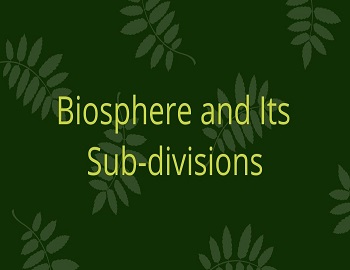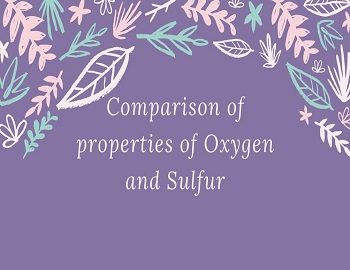Table of Contents
What is Biosphere?
Any living plant or animal is called an organism. The living organisms exist in a variety of habitats (living places) like land, water and air. The water includes both surface water like ponds, lakes and rivers as well as oceanic water. The soil includes land as well as snow-bound mountains. Thus, the earth has a land surface, water and air which support living organisms like plants and animals. A zone consisting of land, water and air, where life exists is called a biosphere. The biosphere includes all the living organisms of the earth and all the life-supporting regions of the earth. The world of living organisms with the layer of water, air and soil on the surface of the earth is called the Biosphere. Biosphere is also called ecosphere, comprising of all the ecosystems.
Extent of Biosphere:
The biosphere extends to about 22.5 km in thickness from the ocean bottom to mountain tops. But, all parts of the biosphere are not suitable for life because of-
- Low temperature.
- Less concentration of oxygen.
- Cosmic radiation is too high.
Likewise, at great depths, light becomes the limiting factor for life. The maximum density of organisms is found in tropical rain forests and coral reefs. Only a few organisms occur in Tundra, desert, hot springs and on the ocean floor. There is no life in frozen mountain peaks, extremely dry regions and live volcanoes.
Sub-divisions of Biosphere:
- Lithosphere- The term lithosphere in Greek means “stony sphere“. Now, the earth has soil and rocks on its surface as well as under oceans. The solid outer portion of the earth containing soil and rocks is called the lithosphere. The lithosphere forms the crust of the earth. The biosphere is supported by the lithosphere.
- Hydrosphere- It is the liquid mantle of the earth. It covers about 70% of the earth’s surface. It comprises of oceans, seas, rivers, streams, lakes and ponds. Oceans and seas have a high salt content, i.e. about 3.5 kg of salts in 100kg of water. In streams, lakes and rivers, water is without salt, i.e. freshwater.
- Atmosphere- There is a mixture of gases surrounding the surface of the earth. This mixture of gases is called air. It envelopes the biosphere and overlies both lithosphere and hydrosphere. The atmosphere is denser near the earth and rarer away from the earth. It contains nitrogen, oxygen, argon, carbon dioxide, water vapour, dust particles etc. Atmosphere extends to several kilometres in height from the surface of the earth. It is differentiated into four parts- troposphere, stratosphere, ozonosphere and ionosphere. The ozone layers act as a screen and check’s the sun’s ultraviolet rays from reaching the earth.
The biosphere is called a biological system because just like any other system, the biosphere has different components which receive certain inputs, undergo interaction and give some output. This is because in a biosphere there is a constant interaction between non-living and living components resulting in the transfer of food and energy. The reason for the biosphere being considered the largest biological system is that the biosphere has a structure made up of all the non-living and living components on the earth where each component performs a certain function. The overall result of these functions makes the biosphere dynamic and stable.









Comments (No)